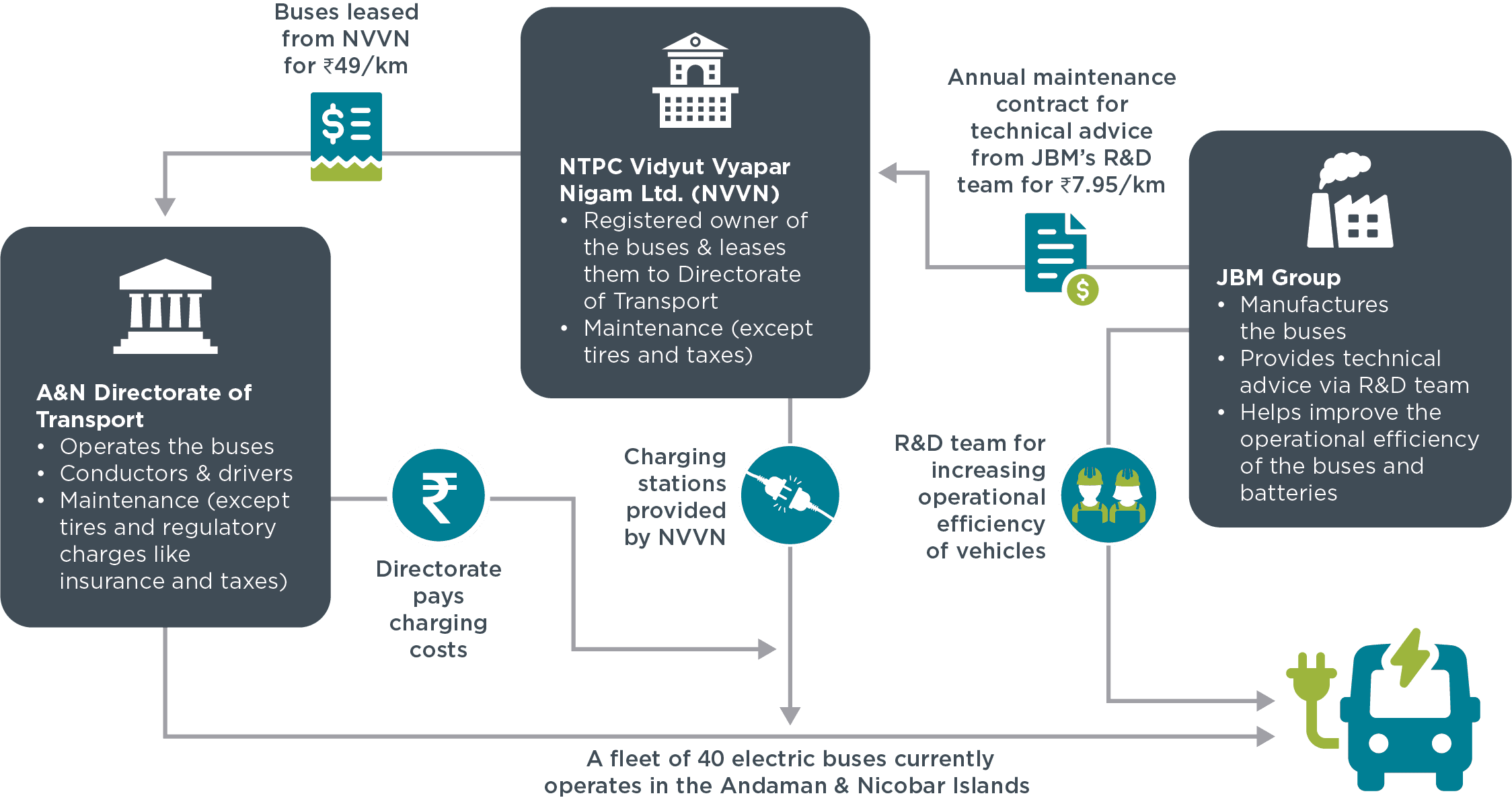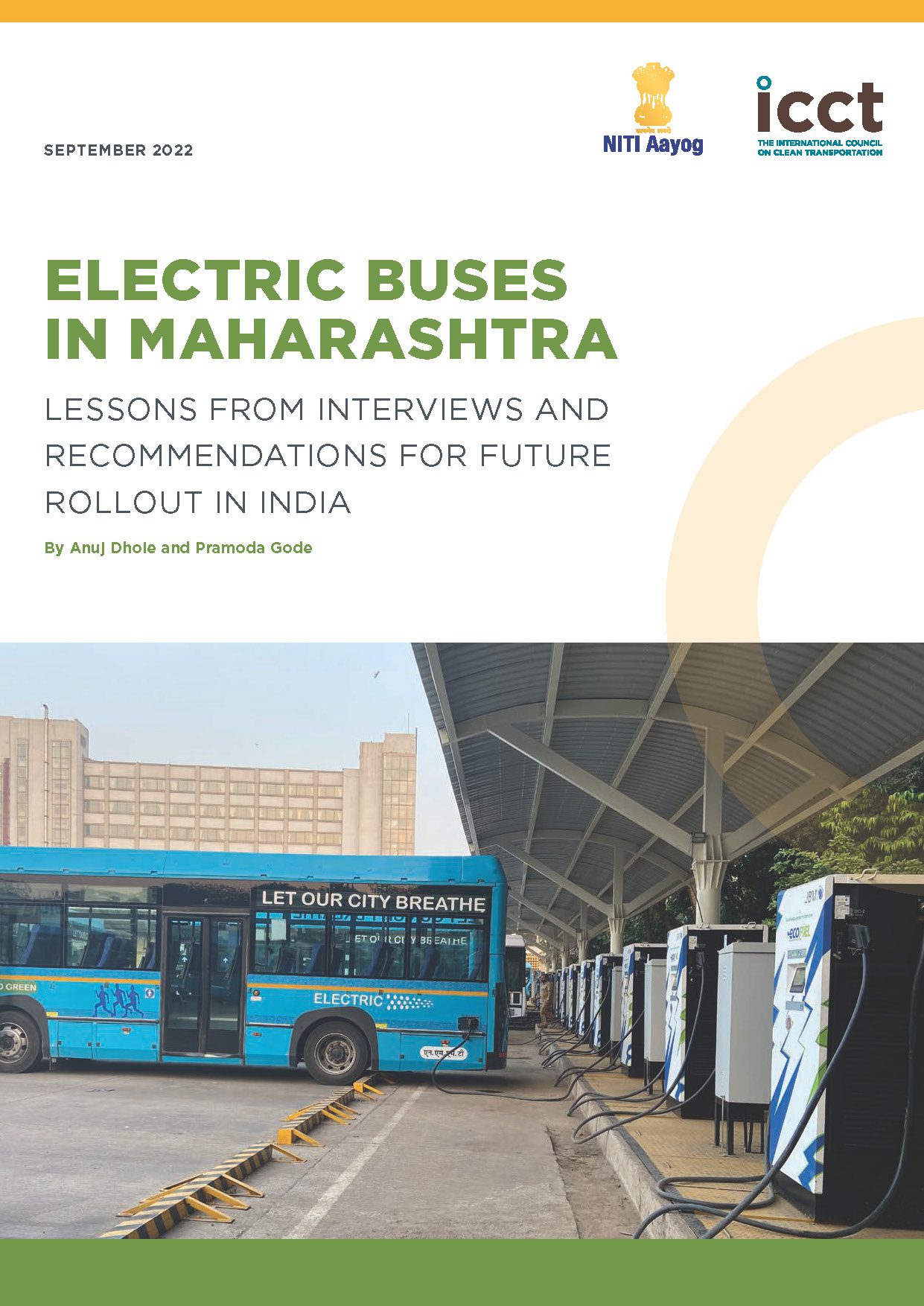Facilitating electric bus adoption by private bus operators across India
Blog
India’s electric buses: Spotlight on the Andaman & Nicobar Islands
With 40 electric buses already in operation and plans to expand, the Andaman & Nicobar Islands are a great story in clean transportation. They aim to transition 100% of their 250 buses to battery electric and augment the fleet by 2030—and that’s not all. As we’ll highlight here, their approach to procurement, infrastructure, and energy could be a good model for Tier 2 and Tier 3 cities in India.
In 2022, the Directorate of Transport of the Andaman & Nicobar Administration published the Electric Vehicle Policy. Its main goal is to accelerate adoption of electric vehicles (EVs) to improve air quality, and it aims for EVs to be at least 30% of new vehicle registrations across all vehicle types by December 31, 2026. The Islands have developed a novel approach for deploying electric buses to help meet this goal.
Under the operational expenditure (OpEx) model detailed in the January 2021 competitive tender for electric buses initiated by the Andaman & Nicobar Administration, power utility NTPC and its wholly owned subsidiary, NVVN, own and maintain the buses. The Directorate of Transport manages charging, tire upkeep, auxiliary batteries, and regulatory costs. JBM, an electric bus manufacturer, provided all 40 electric buses. Relying in part on a 10-year contract with JBM for technical advisory services, NVVN is to ensure at least 97% fleet availability and there are penalties if there are any shortfalls. NVVN leases buses to the Andaman & Nicobar Administration for ₹49/km. NVVN shouldering the upfront cost of purchasing the buses allowed the Islands to have electric buses without substantial capital outlay.
The OpEx model is illustrated in Figure 1 and it includes a dry lease with an annual maintenance contract (AMC). This is different from a gross cost contract (GCC) approach in which the operator oversees bus operations, maintenance, drivers, and charging infrastructure. In this model, the Directorate of Transport provides drivers and conductors, and NVVN covers the maintenance costs excluding tires and regulatory charges.
JBM’s research and development (R&D) team provides the technical advisory services to help optimize technology efficiency and uphold vehicle standards, and this costs NVVM ₹7.95/km under the AMC model. The R&D team consists of mechanics, electricians, and high-voltage battery experts, and they focus on critical issues like battery cooling, which is particularly vital in hot climates. JBM manages fleet operations, oversees workshops, ensures mileage accuracy, and handles incident management and workforce training. The company prioritizes compliance to prevent infractions and all of this supports better overall maintenance and lower maintenance costs over time.
Let’s compare the costs with electric bus operations in Mumbai and Pune, which utilized a GCC model for bus procurement. Under the model used by these large cities, the transit authorities contracted a private operator to provide bus fleet services for a defined period, and the operator was responsible for the operation and maintenance of the buses based on the authority’s schedule. In return, the transit authority paid a fixed cost per unit distance operated. In Mumbai, the contract cost for air-conditioned buses was approximately ₹55/km in 2018 for 40 buses, and it was later reduced to ₹46/km by 2022 for the bulk procurement of 1,900 buses. In Pune, the cost was ₹58/km in 2018 (excluding the cost of depot development) and increased to ₹67/km by 2021 because the operator had to develop and maintain the depot for charging.
Now, about powering the Andaman & Nicobar buses. The Islands rely on diesel generators for electricity and this can reduce confidence in the emissions reduction potential of EVs. With support from the Government of India, however, the Andaman & Nicobar Administration has planned for extensive adoption of renewable energy sources. A solar photovoltaic plant of 5 MW capacity with an annual energy yield of 8 million units (1unit of electricity = 1 kWh) and a battery energy storage system was commissioned in 2013. Additionally, there is a hydroelectric power station on the Kalpong River in North Andaman that has a capacity of 5.25 MW, and it contributes to a total aggregate installed capacity on the Islands of 64.05 MW.
The electric buses on the Andaman & Nicobar Islands are operated in the South Andaman district. They are 9 m JBM ECO-LIFE buses equipped with lithium batteries that are chargeable with fast plug-in DC chargers. In total, seven chargers are operational in Port Blair, and they’re located in bus terminals and in the Directorate of Transport’s central workshop. The buses have a passenger capacity of 42 and can achieve a real-world range of 140 km on a single charge. Passengers appreciate the reduced noise and that the interiors are fully air-conditioned, and these buses have greatly improved connectivity on the island. Officials also told us that the electric buses have operated without interruption through the heavy rains that are common on the Islands.
Each city is unique, but looking at the model employed by the Andaman & Nicobar Islands, we see lots of great lessons for others, especially Tier 2 and Tier 3 cities in India. Buses are an important component of decarbonizing transport in India and sharing successes and best practices helps accelerate the transition.
Authors
Related Publications
Captures experiences from three Indian cities that adopted electric buses early: Mumbai, Pune, and Navi Mumbai.




